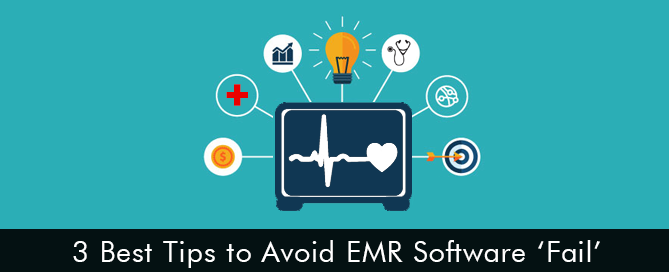For medical practices of all sizes, optimizing the Electronic Medical Records (EMR) Software according to their needs is a common concern. This gets even more important when they have to consider future changes beyond Meaningful Use (MU), ICD-10 transition, and other healthcare regulations.
A lot of specialty practices fall victim to failures that could have been avoided otherwise, had they made proper use of the Electronic Health Records (EHR) Software in place. The under-optimized EMR and Practice Management (PM) Software operations put an extra burden on the clinic staff as well as the physicians, and the efficiency of the whole practice is greatly affected. Thus, by using such under-optimized processes put the operations of the entire healthcare clinic at risk.
An EHR Software Fail can lead to a lot of risks or the practice including:
- Errors in the Medical Billing process.
- Faulty payments processing
- Poor electronic data collection leading to increased manual data entry
Here are a few tips you can use to make sure you’re getting the most out of your EMR Software and using it as efficiently as possible.
1. Choosing the Right EMR Software Vendor
Selecting the right EMR System Vendor is the very first step to make sure that the software that is about to be implemented in the practice suits you and your workflow the best. But making the right choice can be a bit difficult in this case. You can ask your vendor very specific questions about the Patient Portal, Appointment Scheduling, e-Prescribing (e-Rx), or other features present within the EHR System.
Another tip in this regard would be to list down all your requirements and expectations from the EMR Solution and ask specific questions about them from the vendor during the EMR Demo. Once you’re completely sure that this software satisfies all (or most) of your needs, only then proceed towards finally purchasing and implementing it in your medical practice.
2. Getting Specialty-Specific Solutions
Bigger EMR Vendors such as athenahealth or AdvancedMD provide comprehensive EHR Solutions that work for almost all the medical specialties, but they can be a little expensive for smaller practices. If you’re considering EMR Software other than the bigger ones, try getting as specific to your medical specialty as possible. For example, if you are a Dermatology practice, try using a Dermatology EMR Software such as EZDERM.
When everything within the software will be optimized for your practice, you will be more likely to get the most out of it.
3. Effective Technical Support
When the staff of the medical practice is not that tech-savvy, you need to do extra efforts to get them comfortable with the Electronic Medical Records (EMR) Software in place. For that purpose, the technical support from the vendor needs to be strong. This not only gives the staff more control over the software but also helps you fix any bugs that might occur during the use.








